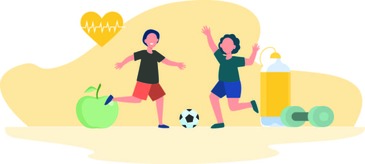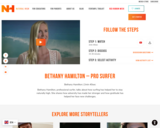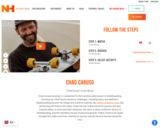
This lesson is designed to help students learn to access health care on their own.
- Subject:
- Health, Medicine and Nursing
- Material Type:
- Lesson
- Lesson Plan
- Author:
- Sexuality Education Open Learning
- Date Added:
- 08/04/2022


This lesson is designed to help students learn to access health care on their own.

This lesson is designed to help students learn to access health care on their own.

Students will learn about the basics of sexual and reproductive anatomy, as well as periods and menstrual care. This lesson is not intended to be divided by gender. We recommend all students learn together, as there is value in understanding all body types and functions, additionally this practice can help students de-stigmatize the natural variations in bodies and experiences.

This lesson provides a brief overview of sexual and reproductive anatomy, and explains how to complete self exams of breasts and testicles. It reviews the basics of reproduction, and introduces the many ways of becoming parents. The final activity asks students to consider the many responsibilities of becoming a parent.

Video lesson intended for grades 3-5 with a mindfulness moment, warmup, instruction and practice of basic balance and transfer of weight movements, and a sequence of two movements. Video is 15:48 minutes in length.Video created by Virginia's Chief Movement Officers cadre in collaboration with Focused Fitness, Virginia Department of Health, and Virginia Department of Education.

Teacher resources, MS and HS lessons on fake pills made of fentanyl - fentapills.
Deaths from fake pills with fentanyl are surging across the country and right here in our own school district. In the past 18 months, we've lost several students to fentanyl-related poisonings — teenagers who had hopes and dreams and plans. These teenagers had families who loved them and are still coming to grips with their losses.
Teens are purchasing what they think are OxyContin, Percoset or Xanax pills via social media, but drug dealers are making these fake pills with the cheaper, stronger and more deadly synthetic drug called fentanyl to increase their profits. Fentanyl is up to 50 times more potent than heroin and 100 times more potent than morphine. Fentanyl is odorless, tasteless and colorless. Teens never know what they’re getting. One pill can kill them. One pill.

Bethany Hamilton, professional surfer, talks about how surfing has helped her to stay naturally high. She shares how adversity has made her stronger and how gratitude has helped her face new challenges.
How to use our resources:
1) Watch a dynamic video featuring a powerful, personal story
2) Discuss the video in a group using provided discussion guides
3) Engage in deeper learning through fun, interactive activities that reinforce the concepts from the video.

Videos, worksheets and other resources for educators to provide remote instruction on boundaries, consent, and healthy relationships. King Co. Sexual Assault Resource Center.

Spark important discussions with your students about brain development, making healthy choices, and staying true to themselves. The Brain’s Response to Natural and Artificial Highs is a 3-part video series that brings neuroscience into the classroom like never before. Teach kids how drugs rewire their brains, leading them to give up their passions, disconnect from friends and interests, and lose their individuality.
How to use our resources:
1) Watch a dynamic video featuring a powerful, personal story
2) Discuss the video in a group using provided discussion guides
3) Engage in deeper learning through fun, interactive activities that reinforce the concepts from the video.

Bryce Wettstein is a professional skateboarder who recently skated in the Tokyo 2021 Summer Olympics where she placed 6th in Park. She’s an optimist who has a unique way of seeing the world and finds the extraordinary in the ordinary. Bryce challenges the common definition of perfection and believes mistakes are an opportunity to learn and grow. She also loves to surf, play volleyball and write songs on her ukulele.
How to use our resources:
1) Watch a dynamic video featuring a powerful, personal story
2) Discuss the video in a group using provided discussion guides
3) Engage in deeper learning through fun, interactive activities that reinforce the concepts from the video.

The COVID-19 Pandemic is a clear example of how science and society are connected. This unit explores how different communities are differentially impacted by the virus through the lens of historical inequities in society. In the context of decisions their families make, students explore the basics of how the virus affects people, and design investigations to explore how it spreads from person to person, and what we can do to prevent that spread.

COVID-19 has caused so many changes in our lives. What are we doing differently now? Why are we doing those things, and how do we feel about all of the changes? In the context of decisions their families make, students explore the basics of how the virus affects people, and design investigations to explore how it spreads from person to person, and what we can do to prevent that spread.

This unit is designed to support students in understanding the COVID-19 pandemic, transmission of the COVID-19 virus, and the impacts of the pandemic on communities, especially communities of color. Specific learning targets are listed at the beginning of each lesson and highlight a core idea for the lesson, the science and engineering practice students will engage in, and the crosscutting concept students will use in the lesson.

This unit is designed to support students in understanding the COVID-19 pandemic, transmission of the COVID-19 virus, and the impacts of the pandemic on communities, especially communities of color. Specific learning targets are listed at the beginning of each lesson and highlight a core idea for the lesson, the science and engineering practice students will engage in, and the crosscutting concept students will use in the lesson. i

The unit focuses on the question How can people help end pandemics? It is designed to teach students about the COVID-19 pandemic, transmission of the COVID-19 virus, and the impacts of the pandemic on communities. Over the course of the unit, students will study the COVID-19 pandemic in light of historical pandemics to build an understanding of the following key concepts:
• How the COVID-19 virus spreads from person to person and through communities,
• How strategies to reduce transmission of COVID-19 work,
• How the actions of individuals can help to end pandemics.
The unit also supports the development of two social emotional competencies: self awareness and social awareness.

Carissa Moore is a four-time World Champion from Honolulu, Hawaii, and in 2021, she was the first woman to ever win a gold medal in surfing at the Olympics.
At the age of 16, she became the youngest champion at a Triple Crown of Surfing event and won the Reef Hawaiian Pro, and at the age of 18, she became the youngest person to win a surfing world title.
Since she was a young girl, Carissa’s been relentlessly focused on one thing: becoming the best in the world. Inspired by the greatest champions before her, and supported by her family to pursue her dreams, she trained for over fifteen years to finally reach the pinnacle of her sport. Having such a daunting goal enabled her to stay focused, positive, and healthy in her choices for pursuing her natural high.
Carissa has leveraged her well known name to a handful of good causes over the years. In 2010, after winning her first CT event in New Zealand, she donated her entire check to the local boardriders club in recognition of their hospitality. She’s advocated openly about the dangers of binge eating, sexism, and body shaming. And she’s an avid crusader for the environment.
How to use our resources:
1) Watch a dynamic video featuring a powerful, personal story
2) Discuss the video in a group using provided discussion guides
3) Engage in deeper learning through fun, interactive activities that reinforce the concepts from the video.

Chad Caruso’s journey is a testament to the transformative power of skateboarding. Growing up, Chad faced numerous challenges, including injury and addiction. Skateboarding became his refuge and a path to sobriety. By setting ambitious goals like performing 50 tricks in 50 states, Chad not only rediscovered his passion but also inspired others to overcome their obstacles. His story is about resilience, the joy of skateboarding, and the relentless pursuit of personal growth. Follow Chad as he skates through life’s highs and lows, sharing his journey and the lessons learned along the way.
How to use our resources:
1) Watch a dynamic video featuring a powerful, personal story
2) Discuss the video in a group using provided discussion guides
3) Engage in deeper learning through fun, interactive activities that reinforce the concepts from the video.

Students will learn about condoms as a form of contraception and STI prevention, as well as talk about safer sex strategies, communication, and how to reserach and access healthcare services and testing.

The lesson introduces students to various contraceptive methods used for pregnancy prevention. The lesson ends with a critical thinking exercise that asks students to figure out the best type of contraception for various teens in different situations.

This lesson reviews the basics of safer sex practices and contraception. It also introduces several laws in Oregon that revolve around consent, reproductive and sexual health access, medical consent, and more.